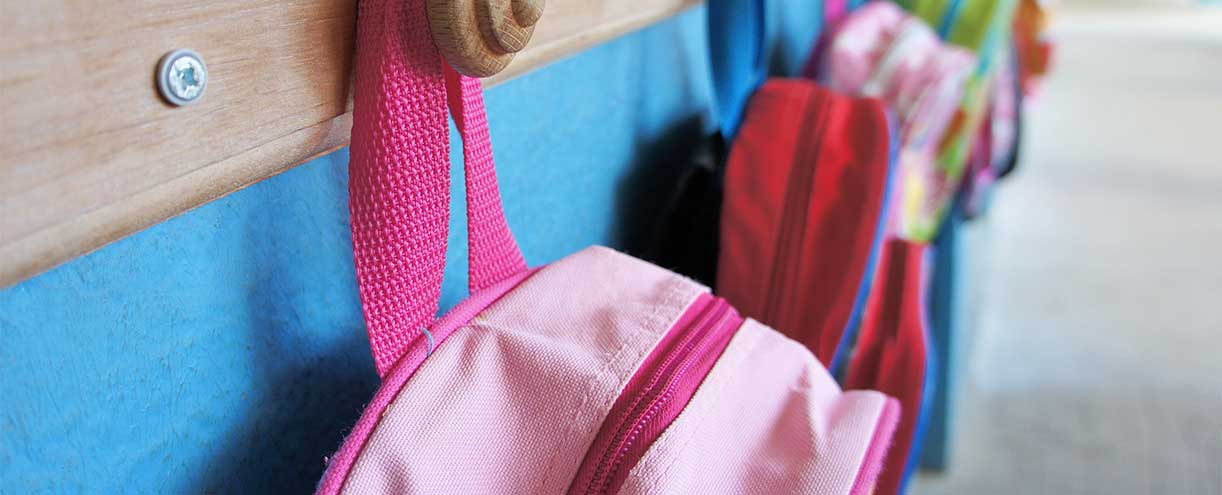This Is How Childhood Trauma Affects Students and What You Can Do
Imagine with me: Nine-year-old Jacob has been up all night. A relative fell ill during the night, resulting in a trip to the hospital.
Too young to stay home by himself, Jacob goes to the hospital, a long ride in the family’s only vehicle. He’s running late for school the next morning because they stayed all night in the hospital waiting room, hoping for good news.
Jacob is in the same clothes from yesterday, and he’s had no breakfast. The family relies on breakfast provided by the school, but he’s missed that.
Approaching school, Jacob’s stomach lurches. He loves school, but he wishes he could be anywhere else today. His teacher is kind. He gets to eat. And it is warm at school, unlike at home, where the heat is on only when the bills are paid. But Jacob is anxious.
This is the fourth time he’s been late this month, and the last time he was told he’d get detention if he came in late again. The other tardies were because his mom had to get to work early and couldn’t take him to school. Walking to school in bad weather made him late.
The school office staff has grown weary of Jacob’s excuses. The other students can get here on time. And, frequently, Jacob smells bad. Why doesn’t he bathe and use deodorant?
The school principal, busy in the office, takes note of staff issuing detention for yet another tardy. He thinks that if Jacob doesn’t start taking school seriously, he’ll be lucky to pass this year. Already there have been issues with him failing to bring school supplies or pay for school lunches.
Jacob begins his day in what’s normally one of his favorite places, but he is filled with anxiety. He’s hungry, tired, dirty, and behind everyone else in his learning.
And those are only the issues that are easy to identify. How many other problems does Jacob face—difficulties most people aren’t even aware of?
As a lifelong educator with more than 20 years of experience in primarily inner-city, low-income schools, Jacob’s story is much more common than most people understand.
But what does this have to do with you? You can be the difference for students like Jacob.
Startling Statistics About Childhood Trauma
Many children in our schools today are living lives filled with trauma of one sort or another — trauma that is often beyond their control.
The statistics on childhood mental health and trauma are startling and heartbreaking. According to the Texas Education Agency, you can take any class of 24 students and find that:
- Approximately four students struggle with mental health issues that impair them in some way.
- Nearly half the class has been exposed to at least one traumatic event.
- About 10% of the class have been exposed to three or more traumatic events.
Board members, administrators, and educators can play a crucial role in making a difference in the lives of the children they serve. According to a National School Boards Association resource on Adverse Childhood Experiences (ACEs), “childhood trauma is among the most relevant and significant psycho-social factors affecting education today.”
It’s essential that educators and educational advocates understand:
- What childhood trauma is
- The role trauma plays in a child’s life
- How board members, administrators, and educators can make a difference
How Childhood Trauma Affects Education, and What Can Be Done
There is substantial research on the complex issue of childhood trauma and its impact on a child’s development. Beginning in the late 1990s, research focused on the role of negative experience, toxic stress, and the consequences of childhood trauma. These studies on Adverse Childhood Experiences (ACEs) has pointed us to the need to focus as much on a child’s mental and emotional state as their academic performance.
According to the National Child Traumatic Stress Network, chronic exposure to traumatic events, especially during a child’s early years, can:
- Adversely affect attention, memory, and cognition
- Reduce a child’s ability to focus, organize, and process information
- Interfere with effective problem solving and planning
- Result in overwhelming feelings of frustration and anxiety.
The exposure to traumatic events and the mental illness that can be associated with these events often spill out into children’s education experience. According to the American Psychological Association, the trauma can:
- Lower students’ academic performance
- Lead to more school absences
- Increase the possibility of dropping out
- Result in more suspensions and expulsions
- Fundamentally impact a child’s reading ability
Creating Trauma-Informed Schools
When it comes to addressing childhood trauma, prevention is the key. Research points to prevention being the most effective response to ACEs.
While schools may not be able to provide these services directly to families for the most part, the National Center for Injury Prevention and Control, Division of Violence and Prevention says there are eight major ways to initiate trauma-prevention measures:
- Home visits to pregnant women and families with newborns
- Parenting training programs
- Intimate partner violence prevention
- Social support for parents
- Parent support and teen pregnancy prevention programs
- Mental illness and substance abuse treatment
- High-quality childcare
- Sufficient income support for lower-income families
The single most important thing the school can do is create a caring, safe environment that supports students and is sensitive to the complex dynamics of life that might be fueling childhood trauma.
Creating or strengthening school-based mental health supports is a first step. A focus on developing resilient, self-confident children can make major inroads.
School districts across the state include trauma-informed care training for staff as a first step toward building trauma-informed schools.
- East Central ISD created multidisciplinary teams that meet regularly as a part of the EC Cares initiative. The committee focuses on being informed and proactive in supporting the needs of its students.
- Midway ISD provides an opportunity for interactive training with students developing, writing, and enacting different safety scenarios for teachers to observe and respond to.
- Larry Rodriguez of Region 20 Education Service Center helped establish Handle with Care in San Antonio, which works with local law enforcement to notify school districts about children encountered during a police call so that the school is ready to support any needs that may arise.
The National Child Traumatic Stress Network created a resource to help schools build trauma-informed environments. The resources help address the needs of all students, staff, administrators, and families who might be at risk of experiencing the symptoms of traumatic stress.
The Leadership Team’s Role in Implementing Trauma-Informed Care in the School District
As a school board member or administrator, you may be asking yourself what you can do. You have a unique role in the direct response to children who are experiencing trauma, toxic stress, and prolonged exposure to multiple ACEs.
Meaningful intervention and treatment must include an integrated, comprehensive effort among all stakeholders. Schools can get the discussion started by participating in channels already established in their area or creating those channels from scratch.
Local school boards can step up and make a change that will generate waves of change through generations.
Questions the School Board Should Ask About Childhood Trauma
When school board members consider how to address childhood trauma in their district, it may be helpful to reflect on the following questions:
- Do we understand the role of trauma in a child’s life?
- Do we know enough to understand when children are experiencing adverse childhood experiences?
- Do we talk about children’s mental, emotional, social, and behavioral well-being in addition to their academic well-being?
- How do we think about and talk about mental health, childhood trauma, and toxic stress and its impact on our students, families, and educators?
- How can we support trauma-informed practices in our district?
- How can we engage in and encourage serious discussion within our community that includes a wide range of stakeholders?
The Supportive Environment We Can Create for Students in Our Schools
Imagine with me now, a different scenario for Jacob. Tired, hungry, emotionally fragile, Jacob comes to school after being in the hospital all night.
He walks into the school office, where staff recognize that regardless of what is going on in the world around him — family illness, bad weather, dirty clothes, no food — Jacob has come to school.
Staff members immediately move into triage for Jacob. They provide a safe, caring environment that sees to his needs, teach him that he is safe and worthy, while giving him the education he needs.
How different would Jacob’s school experience be? It’s a different experience for everyone in the school if they know how to identify the real issues, if they had the knowledge and resources necessary to bring aid and support to Jacob during those fragile times. This is how we can change lives.
As a licensed professional counselor and school counselor, over the last 20 years I’ve been fortunate to work with districts and organizations that stood in that gap — districts that focused on creating caring, safe environments where children were seen as whole beings and where staff were allowed to nurture and support their needs not only academically and behaviorally but also mentally, emotionally, and socially.
I’ve worked in districts where the school board allocated funds to train staff fully, hire professionals to support students in crisis, and support the belief that as educators our primary responsibility is to love our children and help them grow into all that they possibly can be and more.
I’m heartened by what I see happening today as more educators are becoming aware of and learning how to support children, wrapping them up in the resources and supports they need to navigate successfully into adulthood.

Karlyn Keller
Karlyn Keller serves as division director of Student Solutions, where she leads a team of educational professionals in serving school districts’ special populations programs.
Keller has more than 30 years in education, beginning as a substitute teacher in 1992. During her time in education, she has served as teacher, school counselor, educational diagnostician, campus administrator, director of various special populations programs, and assistant superintendent. She joined TASB in 2015.
Keller is a graduate of East Texas State University, where she received a bachelor’s degree in education with a concentration in special education and psychology and has a bachelor’s degree in cross-cultural communication from Southwest Assemblies of God University. She earned a master’s degrees in special education and in counseling from Texas A&M University – Commerce, and master’s degrees in educational administration and in gifted and talented from the University of North Texas. She also earned a doctorate in education from the University of North Texas.
Contact at karlyn.keller@tasb.org.





